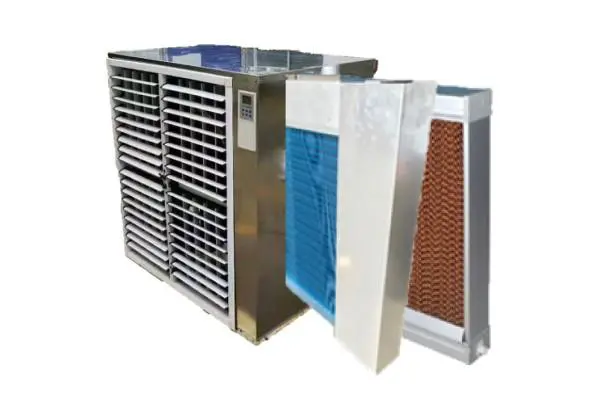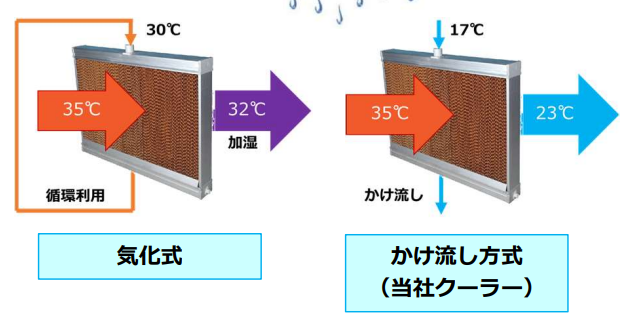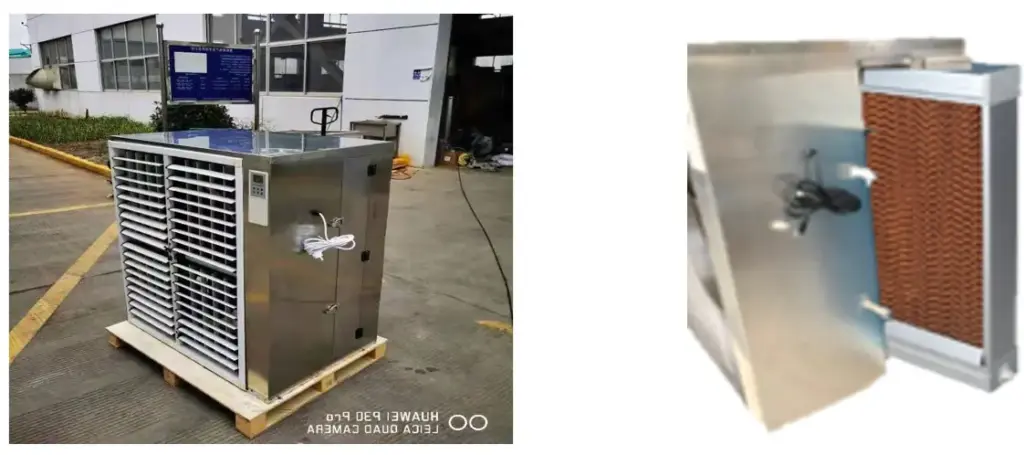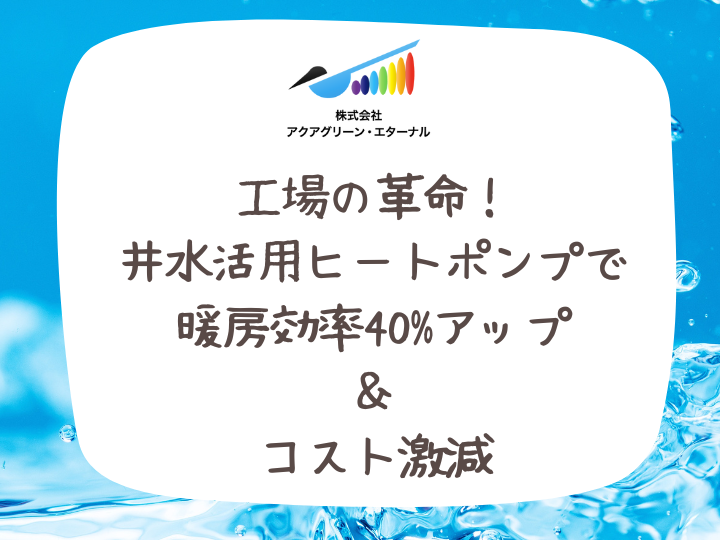The number of installations of groundwater coolers that utilize renewable energy has increased sharply this fiscal year.

What is a groundwater cooler that uses renewable energy?
The groundwater coolers that we handle, which use renewable energy, are often confused with ordinary evaporative cooling fans, but they have completely different characteristics.
An evaporative cooler works by blowing water (usually at the same temperature as room temperature) collected in a tank onto a panel, creating air and cooling using the heat of evaporation.
Therefore, while a cooling of about 5°C can be expected when the air is dry, on cloudy days or when the humidity increases with continuous use, the result will be a cooling of only about 3°C, and if the humidity approaches 100% it will become damp.
In addition, as the water accumulated in the tank continues to evaporate, it becomes concentrated, which can lead to problems such as scale and bacterial growth.
Therefore, there are many cases where it is problematic for industrial use.
Our groundwater coolers use groundwater in a free-flowing system rather than a circulating system.
The groundwater remains at a temperature of around 15°C throughout the year, which is between summer and winter, making it a suitable heat source for both heating and cooling.
By using this groundwater, it is possible to blow air at a temperature of about 23°C when the room temperature is 35°C in the middle of summer.
In addition, because low-temperature groundwater is used, the humidity that comes out is only the absolute humidity at the temperature of the groundwater, so this system keeps the humidity inside the room from increasing, which is very popular with our customers.

Introducing a test example of an underground water cooler for upcoming installation
①In December of last year, we conducted a test run of an underground water cooler at a certain major factory.
We wanted to reduce CO2 emissions by using renewable energy, so we conducted a test in a factory with a furnace. There is a room where the temperature reaches 33 degrees even in December.
During the test, a wind temperature of 23 degrees was blown out, and it was confirmed that continuous operation lowered the surrounding temperature, leading to the decision to install six units.
The device used is the AE-DCD900S (single panel made of stainless steel).

AE-DCD900S
Water usage: 3-5 liters/min
Air volume: 250m3/min
Fan: Single phase 100V 550W
②In April of this year, we conducted a test run of an underground water cooler at a certain major factory.
As part of our efforts to conserve energy by utilizing renewable energy, we test-installed one AE-DCD900R (stainless steel radiator composite double panel) at the end of December last year, starting with heating operation.
For heating, we used hot water of about 60 degrees Celsius available in the factory, and found it to be sufficient.
It's April now, and we recently carried out work to switch to cold water for air conditioning.
During the test, the water temperature was around 17°C and the temperature of the blown air was 20-21°C.
The maximum temperature on this day was about 26°C, so even in the middle of summer we can expect the temperature to reach about 23°C, and we are positively considering expanding this year.

AE-DCD900R
Water consumption: 3~5l/min+10l/min
Air volume: 200m3/min
Fan: Three-phase 200V 1100W



